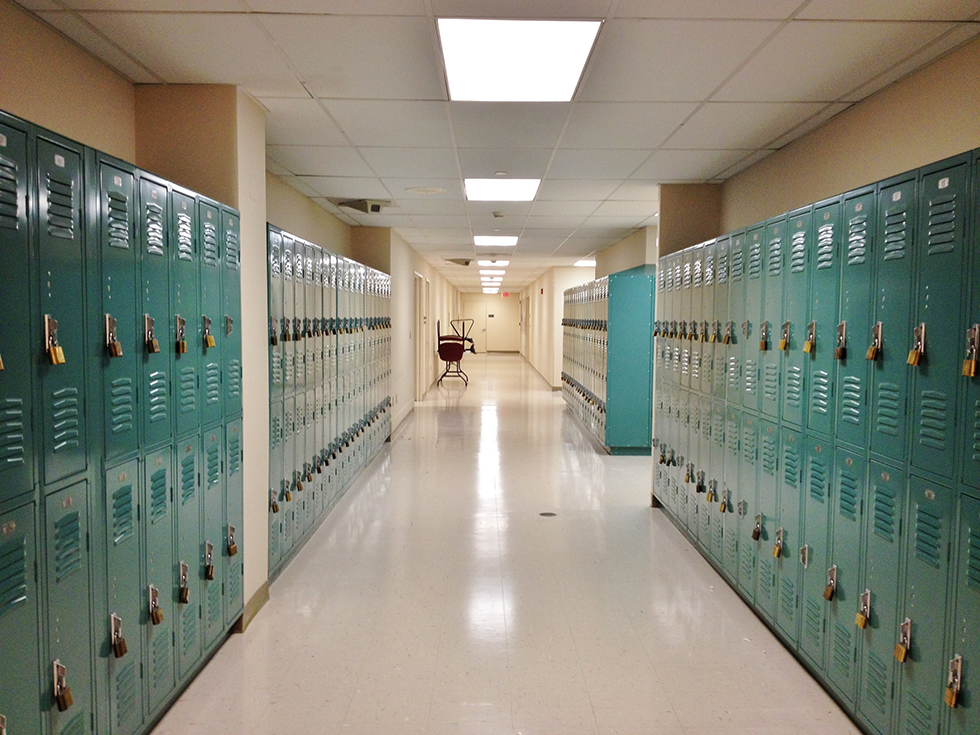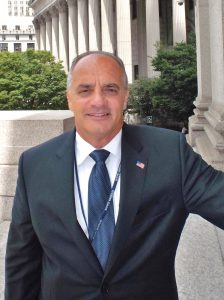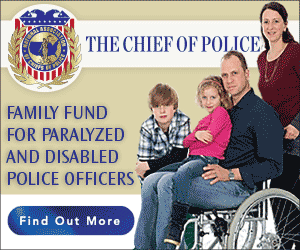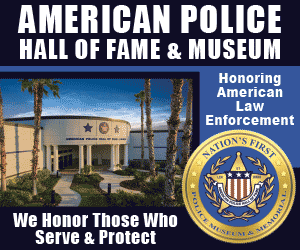Reawakening America LLC in Partnership with the National Association of Chiefs of Police
By Vincent J. Bove
Recently, I read a book titled “How to Deal with Toxic People.”
It was a glaring reminder that understanding toxic personalities is essential to law enforcement, educators, mental health professionals and the judicial system.
Here are the toxic personality types addressed in the book:
- The Deceiver — one who habitually lies, which is part of a larger deceptive context. This personality type creates mistrust, chaos, and uncertainty.
- The Control Freak — meddles with your business, tells you how to act and holds you to impossible standards. They drain your energy and seek to undermine others self-worth.
- The Gaslighter — comes from a 1944 film “Gaslight,” which highlights a manipulative spouse making the innocent party feel they are psychologically impaired.
- The Angry Venter — treats others as verbal punching bags.
- The Know-It-All — is right about everything, always in competition with others and needs to win always. They seek to manipulate, mistreat and dominate others.
- The Intimidator — seeks control by issuing threats, sometimes with bark and no bite, but can also back threats with actions. They breed resentment, bitterness and anger.
- The Egotist — their motto is “It’s all about me!” They crave, demand and hog the spotlight, dominate conversation and disregard the needs of others.
- The Drama Queen or Crisis King — Every issue, even normal experiences is catastrophic. They need to be the center of the storm, whip up problems and orchestrate emotional conflicts.
- The Put-Down Artist — uses words, tone of voice and actions to degrade the value of others. They are often callous and insulting, using biting remarks or sarcasm to diminish others.
- The Moral Authority — pontificates to coerce compliance.
- The Emotional Roller Coaster — takes others on mood swings to control.
- The Pessimist — spreads discontent, and negativity like a contagious virus.
- The Guilter — never able to apologize, but always blaming others for everything.
- The Addict — dysfunctional due to addictions (substance abuse, gambling, alcoholism, etc.) and will say and do anything to cover their needs, including distorting the truth and inventing false realities. [i]
The ability to effectively respond to toxic personalities begins with awareness. These toxic personality types are highlighted to empower individuals to effectively respond.
A toxic personality does not definitively lead to acts of violence. Yet, understanding toxic personalities, especially when warning signs or imminent warning signs are identified, is pertinent. This understanding benefits understanding human deficiencies, preventing violence and contributing to civility in society.
[i] How to Deal with Toxic People, Gregory L. Jantz, PhD with Keith Wall, Aspire Press, © 2021. Pgs. 12 — 38.
Note Well: The insights of the authors were simplified and consolidated for this article.
America’s Most Deadly School Violence Tragedies
Before we continue with identifying warning signs, imminent warning signs, and countermeasures, let us solemnly reflect on America’s violent and traumatic culture.
The Center for Homeland Defense and Security (CHDS) of the Naval Postgraduate School notes that school violence in America continues to increase in number and impact.
The CHDS also notes, in a comprehensive interactive data map of shooting incidents, [i] that the deadliest active shooter attacks at schools since 1970 (K-12) are as follows:
- Uvalde, TX, 21 dead, 2022, Robb Elementary School
- Oxford, MI, 4 dead, 2021, Oxford High School
- Parkland, FL, 17 dead, 2018, Stoneman Douglas High School
- Santa Fe, TX, 10 dead, 2018, Santa Fe High School
- Marysville, WA, 4 dead, 2014, Marysville Pilchuck High School
- Newtown, CT, 26 dead, 2012, Sandy Hook Elementary School
- Nickel Mines, PA, 5 dead, 2006, West Nickel Mines School
- Red Lakes, MN, 7 dead, 2005, Red Lake Senior High School
- Littleton, CO, 13 dead, 1999, Columbine High School
- Jonesboro, AK, 5 dead, 1998, Westside Middle School
- Olivehurst, CA, 4 dead, 1992, Lindhurst High School
- Stockton, CA, 5 dead, 1989, Cleveland Elementary School
The map details 2,068 shootings, 684 fatalities, and 1,937 injuries in K-12 schools (excludes colleges and universities) from January 1970 to June 2022.
Although Virginia Tech was not a K-12 incident, as past spokesperson for a coalition of victim’s families from the Tech (32 dead, Apr. 16, 2007), I am compelled to note this tragedy. It is one of the deadliest in American history, and a sobering commentary on the ceaseless violence at schools and campuses. [ii]
Warning Signs, Timely Response
Since the Columbine tragedy in 1999, I have highlighted the necessity of understanding and responding to warning signs in presentations nationwide and in extensive published works.
These warning signs were originally published in the government booklet “Early Warning, Timely Response: A Guide to Safe Schools.” [i]
The booklet was published by the U.S. Department of Education (USDOE). The USDOE provided thousands of copies for my presentations after the 1999 Columbine tragedy.
This booklet is a treasure trove for understanding and preventing school violence. Unfortunately, its insights are still not valued or appreciated.
As noted in “Early Warning Signs,” and spotlighted in my book “Listen to Their Cries,” it is not always possible to predict violent behavior. However, the community can recognize early warning signs that demand intervention.
An abundance of caution is always the necessary approach to violence prevention. One should assume that warning signs, especially when numerous, indicate a need for a threat assessment.
It should be noted that the USDOE warning signs are not equally significant. They are not presented in order of seriousness and deserve comprehensive and contextual study and understanding.
The USDOE early warning signs are as follows:
- Social withdrawal
- Excessive feelings of isolation and being alone
- Excessive feelings of rejection
- Being a victim of violence
- Feelings of being picked on and persecuted
- Low school interest/poor academic performance
- Uncontrolled anger
- Patterns of impulsive and chronic hitting, intimidating and bullying
- Expression of violence in writings
- History of discipline problems
- Past history of violent aggressive behavior
- Drug and alcohol use
- Affiliation with gangs
- Intolerance for differences and prejudicial attitudes
- Inappropriate access to, possession of and use of firearms
- Serious threats of violence
Imminent Warning Signs
The “Early Warning Timely Response”guide gives additional insights on each of these warning signs. The guide also notes that unlike early warning signs, “imminent warning signs indicate a student is very close to behaving in a way that is potentially dangerous to self/or to others. Imminent warning signs require an immediate response.”
“Imminent warning signs are usually presented as a sequence of overt, serious, hostile behaviors or threats directed at peers, staff or other individuals. “Usually, imminent warning signs are evident to more than one staff member — as well as to the child’s family.” Imminent warning signs according to the guide, may include;
- Serious physical fighting with peers or family members.
- Severe destruction of property.
- Severe rage for seemingly minor reasons.
- Detailed threats of lethal violence
- Possession and/or use of firearms and other weapons.
- Other self-injurious behaviors or threats of suicide.
When warning signs indicate a danger is imminent, safety must be first and foremost. The guide highlights that “action must be taken immediately.” Immediate intervention by school authorities and possibly law enforcement officers is needed when a child:
- “Has presented a detailed plan (time, place, method) to harm or kill others — particularly if the child has a history of aggression or has attempted to carry out threat in the past.
- Is carrying a weapon, particularly a firearm, and has threatened to use it.”
Countermeasures: Toxic Personalities, Warning Signs, Imminent Warning Signs
Now that we have addressed toxic personalities, warning signs, and imminent warning signs have been identified, let us present countermeasures. Here are six preliminary countermeasures to improve school security that deserve implementation:
1. Security Vulnerability Assessment: The security vulnerability assessment (SVA) identifies and evaluates the vulnerabilities and strengths of schools. The primary concern of the SVA is the protection of lives. It should be conducted by a reputable board certified protection professional. Each school has its own complexion. Therefore, each SVA is customized to properly diagnosis specific and effective corrective security and safety measures.
The SVA is designed on the risk management principles of mitigation/prevention, preparedness, response and recovery. It includes recommendations on personnel security, physical security, emergency practices and informational security. It must recommend pertinent training programs for the entire school community.
A professional board certified SVA also addresses the following:
- Existing plan identification and review
- Interviews from throughout the entire school community. These include administrators, teachers, counselors, psychologists, cafeteria workers, coaches, bus drivers, students, parents, law enforcement, first responders, janitorial staff and vendors.
- Interviews also include the superintendent, board of education representation and members of the threat assessment team.
- Analysis of the pedagogy/culture of the school — repressive, lax or preventive
- Identifying Crime Prevention Through Environmental Design (CPTED) principles
- Review of arrival, exchanges, dismissal, cafeteria assemblies and extracurricular activities
- Security policy and procedure review
- Safety and security checklists
- Access management issues: ID cards, metal detectors, barrier arms, bollards
- Visitor/contractor/delivery analysis
- Security personnel
- Law enforcement and first responder partnerships
- Event venue security analysis
- Communication systems for emergencies
- Extracurricular activities security
- Walkthroughs
- Luminosity studies
- Active shooter, fire drills, evacuations, lockdown, sheltering in place, bomb threat drill reviews
- Character education culture analysis
- Early warning signs
- Threat assessment/crisis management team analysis
- Review of school culture — character, respect and diversity
- Bullying prevention review
- School Resource Officer (SRO)/Contract or In-House Security Personnel — training, certification, interviews and costs
2. School resource officers (SRO’s): An important school violence prevention, character education and community policing initiative.
The SRO program demands the most qualified, trained, certified and dedicated police professionals available. These officers need a charisma that builds trust with the entire school community. It is also essential that qualified backup officers are also available for relief needs of assigned SRO’s.
According to the document, “To Protect & Educate: The School Resource Officer and the Prevention of Violence in Schools,” [i] published by the National Association of School Resource Officers (NASRO), the activities of the SRO include the following:
- Meeting with principals each morning to exchange information gathered from parents, community members and social media. This helps to detect potential spillover of threats, drug activity and other negative behavior concerns.
- Meeting with school and community social workers. This is to understand when and how at home issues may be motivating a student’s disruptive behavior so school staff can ensure effective and supportive responses.
- Listening to students’ concerns about bullying and addressing problems as necessary to develop solutions.
- Coordinating additional law enforcement resources to assist with large public events such as athletic events, dances and community functions.
- Working with school administrators to keep the school’s Emergency Management Plan updated.
- Scheduling emergency drills in collaboration with other local agencies.
3. Preventive System of Education: This pedagogy is the golden nugget of transforming American schools. Yet, its importance is unfortunately minimized, misunderstood, or not implemented.
In my article titled “AmericanTeachers: Inspire the Heart and Transform the Country,” [ii] I argued that there are essentially two basic forms of education in American schools.
There is the repressive system that makes rules known, watches for transgressions and is quick to discipline a student by inflicting condescending correction and punishment.
The errant zero-tolerance policy in so many schools is an example of a repressive system — rigid, bureaucratic and impersonal.
The effective pedagogy is the preventive system of education. In this system, educators are vigilant in a caring manner. They offer encouragement and guidance from the heart. The educator is effective through kindness, patience and reasonableness.
The preventive system builds trust, respect and connections with students, staff and community.
This pedagogy is the opposite of a zero-tolerance approach. The preventive system responds to concerns with measured interventions. It promotes reasonableness, dignity and respect.
The repressive system is dictatorial. It may temporarily stop a disorder or address a warning sign, but will not inspire students or properly remedy the issue.
The preventive system speaks the language of the heart and is transformational. It provides speedy intervention to warning signs due to the educator’s dedication, presence and dignified approach.
The preventive system of education is inseparable from a robust character education program. It sets the proper tone in the school. It is also effective with preventing bullying, [iii] critical to school violence prevention.
4. Professional Development Programs: These programs are important for all staff members. They must include coaches, parents, cafeteria personnel, SRO’s, board of education members, mental health professionals, SRO’s, school crossing guards, bus drivers, parents, students — all involved with the school.
Some of the topics I have covered in my professional development programs have included the following:
- Ambassadors of Community Transformation
- American School Violence Prevention
- Character Education: Vital to the School Community
- Early Warning Signs: Preventing a School Violence Crisis
- Crisis Planning: Prevention, Preparedness, Response, Recovery
- Transforming Our Schools: The Heart and Brick of School Security
- 21st Century Parenting: Interested, Informed, Involved
- Creating a Culture of Achievement and Character
- Be a Person of Character: Change the World
- America’s Schools: Security, Character, Academics
Insights from classic government documents including the following should also be incorporated into training programs:
- Early Warning Timely Response: A Guide to Safe Schools
- Practical Information on Crisis Planning: A Guide for Safe Schools and Communities [iv]
- The Final Report And Findings Of The Safe School Initiative: Implications For The Prevention Of School Attacks In The United States [v]
- Threat Assessment in Schools: A Guide to Managing Threatening Situations and To Creating Safe School Climates. [vi]
- Enhancing School Safety Using a Threat Assessment Model: An Operational Guide for Preventing Targeted School Violence [vii]
5. Character Development Initiatives for Students: Schools must provide the leadership to instill a culture of character.
Developing students with hearts of character built on the pillars of honesty, respect, civility and patriotism must be paramount throughout America’s educational communities.
Character is critical for transforming America from our culture of violence. Character education must be consistent, exemplified and rewarded in our schools. Students must be inspired to realize that lives of character influence their lives, schools, families, communities and the very heart of the nation.
A robust character education program is inseparable and co-dependent with the preventive system of education.
6. Threat Assessment Teams: A zero-tolerance approach, rather than the preventive system of education, can lead to an exaggerated response to harmless issues. These include the innocent use of nail clippers, finger pointing, or water pistols — with illogical discipline, suspension or termination.
The more effective approach is reasonableness, and to have a threat assessment by members of the threat assessment team if necessary.
Questions for the assessment include the following:
Is the person a threat, on the path to violence, do they have access to weapons, or they talking about accomplices, or making threats — either directly or indirectly?
The threat assessment team requires a collaborative approach by numerous disciplines — including security, mental health, administration and law enforcement.
Anyone on the radar with substantive concerns or a proclivity to violence demands immediate intervention by a person of authority, the threat assessment team and/or law enforcement.
Also, a mechanism for 24/7 anonymous tips gives community, teachers, students, and even parents the ability to have the threat assessment team or law enforcement intervene. Responses can include counseling, alternative learning, appropriate discipline or law enforcement intervention.
United States Secret Service Threat Assessment Guide
The report titled Threat Assessment in Schools: A Guide to Managing Threatening Situations and to Creating Safe School Climates, [i] by the U.S. Secret Service (USSS) offers invaluable guidance for threat assessment teams.
This classic report, which deserves comprehensive study, highlights these 10 findings:
- Incidents of targeted violence at school rarely were sudden, impulsive acts.
- Prior to most incidents, other people knew about the attacker’s idea and/or plan to attack.
- Most attackers did not threaten their targets directly prior to advancing the attack.
- There is no accurate or useful “profile” of students who engaged in targeted school violence.
- Most attackers engaged in some behavior prior to the incident that caused others concern or indicated a need for help.
- Most attackers had difficulty coping with significant losses or personal failures. Moreover, many had considered or attempted suicide.
- Many attackers felt bullied, persecuted, or injured by others prior to the attack.
- Most attackers had access to and had used weapons prior to the attack.
- In many cases, other students were involved in some capacity.
- Despite prompt law enforcement responses, most shooting incidents were stopped by means other than law enforcement intervention. xv
United States Secret Service Guide: Enhancing School Safety
The USSS guide titled Enhancing School Safety Using a Threat Assessment Model: An Operational Guide for Preventing Targeted School Violence is essential for the threat assessment team. It must be part of ongoing professional development to effectively safeguard the school.
This guide details eight steps for utilizing the threat assessment model to prevent targeted school violence:
- Establish a multidisciplinary threat assessment team to direct and manage the assessment process.
- Define behaviors of concern.
- Create a reporting mechanism with which individuals or students can report concerning behavior anonymously.
- Determine a threshold for involving law enforcement.
- Establish assessment procedures identifying sources of information using a community systems approach.
- Develop options for managing identified risk.
- Encourage and promote positive school environments.
- Identify training needs for faculty, staff, teachers and anyone involved in maintaining school safety.
“The guide also recommends that schools develop emergency response plans with input from law enforcement and first responders. These plans should be made available to all local emergency personnel in the event that a violent attack occurs despite measures to prevent one.” [i]
The Second Amendment: Respected Not Misinterpreted
My professional responsibilities throughout the past 30 years have included developing armed contract services as a countermeasure to crime.
Some lessons learned from these experiences are as follows:
First, there are individuals with nefarious intentions or mental health concerns posing danger. A unity of effort between the private and public sector is necessary to protect society. The task is too great for the public sector alone. The private sector and law enforcement demand collaboration to safeguard society.
Second, ceaseless and horrific tragedies scream to the heavens for more responsible gun laws. It is self-evident that the founding fathers would never permit gun ownership, or access, to individual’s intent on killing innocent men, women and children.
Law-abiding citizens must also have their Second Amendment rights respected. But the Second Amendment must never be misinterpreted, violated or abused.
The violence in America continues — we must do everything it takes to end the madness.
Final Reflections: Averting Targeted School Violence
The newest document of the USSS is titled “Averting Targeted School Violence, A U.S. Secret Service Analysis of Plots against Schools.” [i]
This analysis deserves diligent study, as with all USSS school violence documents.
In conclusion, a summary of this USSS analysis is in order. These points, from the document, reinforce the aforementioned issues of toxic personalities, warning signs, imminent warning signs and countermeasures, and are as follows:
- Targeted school violence is preventable when communities identify warning signs and intervene.
- Schools should seek to intervene with students before their behavior warrants legal consequences.
- Students were most often motivated to plan a school attack because of a grievance with classmates.
- Students are best positioned to identify and report concerning behaviors displayed by their classmates.
- The role of parents and families in recognizing concerning behavior is critical to prevention.
- School resource officers (SROs) play an important role in school violence prevention.
- Removing a student from class does not eliminate the risk they might pose to themselves or others.
- Students displaying an interest in violent or hate filled topics should elicit immediate assessment and intervention.
- Many school attack plots were associated with certain dates particularly in the month of April.
- Many of the student’s plotters had access to weapons, including unimpeded access to firearms.
Related:
Echoes of Columbine: School Violence Awareness and Prevention, 2022.
Echoes Of Columbine: School Violence Awareness And Prevention
School Violence Warning Signs through the Prism of Uvalde’s Tragedy, 2022.
http://vincentbove.blogspot.com/2022/09/school-violence-warning-signs-through.html
America’s Active Shooter Crisis Demands Visionary Leadership, 2022.
America’s Active Shooter Crisis Demands Visionary Leadership
Five Preliminary Tips for Improving American School Security, 2018.
http://vincentbove.blogspot.com/2018/02/5-preliminary-tips-for-improving.html
School Violence Warning Signs through the Prism of Uvalde’s Tragedy, 2022.
http://vincentbove.blogspot.com/2022/09/school-violence-warning-signs-through.html
America’s Active Shooter Crisis Demands Visionary Leadership, 2022.
Five Preliminary Tips for Improving American School Security, 2018.
http://vincentbove.blogspot.com/2018/02/5-preliminary-tips-for-improving.html
[i] How to Deal with Toxic People, Gregory L. Jantz, PhD with Keith Wall, Aspire Press, © 2021. Pgs. 12 — 38. Note Well: The insights of the authors were simplified and consolidated for this article.
[ii] Center for Homeland Defense and Security, Naval Postgraduate School
https://www.chds.us/ssdb/data-map/
[iii] Crisis of Leadership: A Response to the Virginia Tech Panel Report, 2007.
http://www.vincentbove.com/VBove–VTResponse–WebVersion.pdf
Virginia Tech Articles in the Sentinel by Vincent J. Bove, 2007 — 2017.
http://vincentbove.blogspot.com/search/label/Virginia%20Tech
[iv] Early Warning, Timely Response: A Guide to Safe Schools, 1999.
https://www.schoolsafety.gov/resource/early-warning-timely-response-guide-safe-schools
[v] To Protect & Educate: The School Resource Officer and the Prevention of Violence in Schools, 2012.
https://www.nasro.org/clientuploads/resources/NASRO-Protect-and-Educate.pdf
[vi] American Teachers: Inspire the Heart and Transform the Country, 2014.
http://vincentbove.blogspot.com/2014/04/american-teachers-inspire-heart-and.html
[vii] School Bullying: A Matter of Life and Death, 2016.
http://vincentbove.blogspot.com/2016/08/school-bullying-matter-of-life-and-death.html
Also, Preventing Bullying: A Manual for Schools and Communities. USDOE 1998, https://eric.ed.gov/?id=ED453592
[viii] Practical Information on Crisis Planning, 2007. https://www2.ed.gov/admins/lead/safety/crisisplanning.html
Two additional resources for this topic are the Emergency Planning Handbook by ASIS International 2003, and Workplace Violence Issues in Response by the Critical Incident Response Group of the FBI Academy, 2003.
https://www.ojp.gov/ncjrs/virtual-library/abstracts/workplace-violence-issues-response
[ix] The Final Report And Findings Of The Safe School Initiative: Implications For The Prevention Of School Attacks In The United States, 2004 https://www2.ed.gov/admins/lead/safety/preventingattacksreport.pdf
[x] Threat Assessment in Schools: A Guide To Managing Threatening Situations And To Creating Safe School Climates, 2002 https://www.secretservice.gov/node/2559
[xi] Enhancing School Safety Using a Threat Assessment Model: An Operational Guide for Preventing Targeted School Violence, 2018. https://www.secretservice.gov/newsroom/reports/threat-assessments/schoolcampus-attacks/details
[xii] Ibid. Threat Assessment in Schools https://www.secretservice.gov/node/2559
[xiii] Averting Targeted School Violence, A U.S. Secret Service Analysis of Plots against Schools, 2021.
https://www.secretservice.gov/newsroom/reports/threat-assessments/schoolcampus-attacks/details-0
[xiv] Preventing School Violence in America, Homeland Security Digital Library
https://www.hsdl.org/c/preventing-school-violence-in-america/
[xv] The Final Report and Findings of the Safe School Initiative: Implications for the Prevention of School Attacks in the United States, 2004. https://www.secretservice.gov/sites/default/files/2020-04/ssi_final_report.pdf pgs. 11-12.



 About the Author
About the Author
